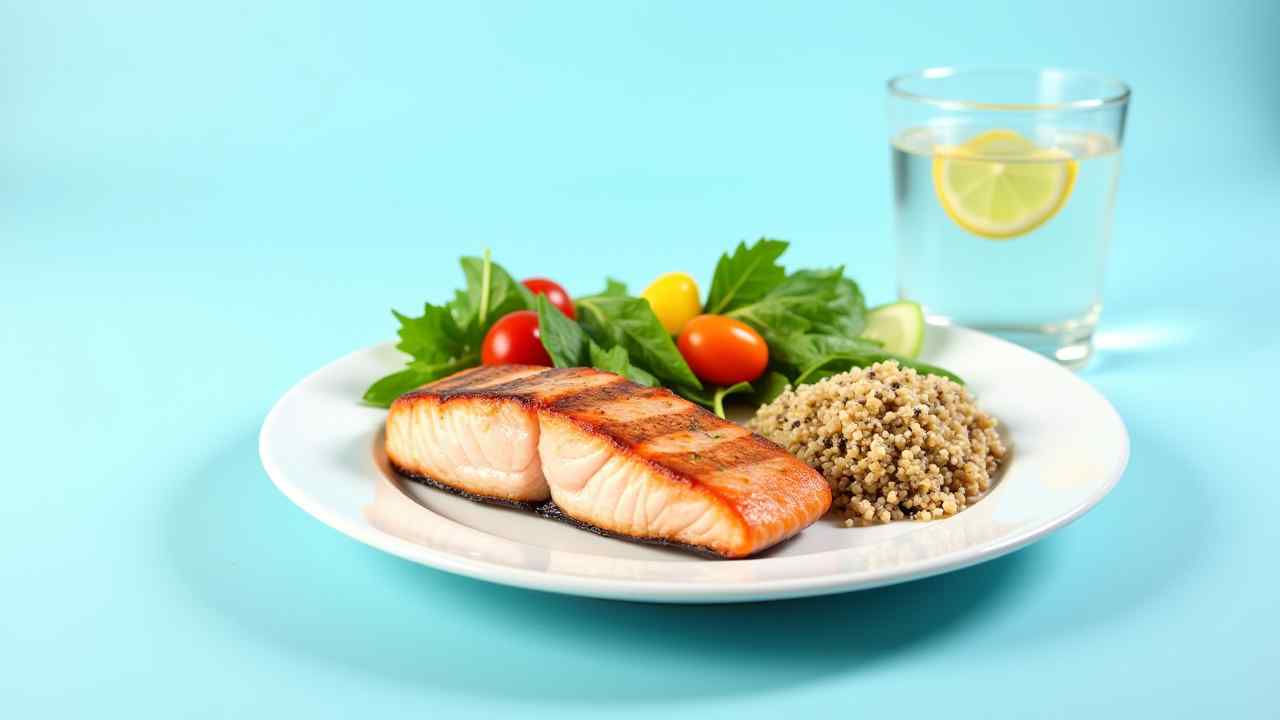
🩺 A Guide to the Dysmetabolic Syndrome Diet (Metabolic Syndrome)
🩺 A Guide to the Dysmetabolic Syndrome Diet (Eating for a Healthier Metabolism) 🩺
❗ Important Medical Information: Dysmetabolic Syndrome, also known as Metabolic Syndrome, is a serious medical condition. This guide is for informational purposes only. You must work with your doctor and a registered dietitian to create a personal management plan.
Dysmetabolic Syndrome is a cluster of health issues. These issues increase your risk for heart disease and diabetes. They include high blood pressure and high blood sugar. Excess belly fat is another key sign.
The good news is that this condition is highly manageable. Lifestyle changes are the first and most powerful treatment. A targeted dysmetabolic syndrome diet is the foundation of this change. It can help you regain control of your health.
🤔 What Are the Main Goals of the Dysmetabolic Syndrome Diet?
This diet is not a short-term fix. It is a long-term eating pattern. It is designed to address the root causes of the syndrome. There are a few primary goals for this way of eating.
How Does it Improve Insulin Sensitivity?
Many people with metabolic syndrome have insulin resistance. This diet helps your body's cells respond better to insulin. It reduces the strain on your pancreas. This is key to controlling blood sugar.
How Does it Lower Blood Pressure?
The diet focuses on reducing sodium intake. It also promotes foods rich in potassium and magnesium. This combination is proven to help lower blood pressure. It is a cornerstone of the dysmetabolic syndrome diet.
How Does it Improve Cholesterol Levels?
By focusing on healthy fats and limiting unhealthy ones, this diet helps your cholesterol. It aims to lower triglycerides and raise HDL ("good") cholesterol. This is crucial for heart health.
✅ What Foods Should You Eat to Fight Metabolic Syndrome?
The best dysmetabolic syndrome diet is rich in whole foods. Think of eating patterns like the Mediterranean or DASH diet. These are full of nutrients that fight inflammation. They also help manage weight.
Why Should You Fill Up on Fiber-Rich Foods?
Fiber is a true powerhouse. It helps control blood sugar by slowing digestion. It can also help lower cholesterol. Load your plate with non-starchy vegetables, beans, lentils, and whole grains like oats and quinoa. 🥗
Which Healthy Fats are Best?
Healthy fats are essential for fighting inflammation. Focus on monounsaturated and polyunsaturated fats. Excellent sources include:
- Olive oil
- Avocados 🥑
- Nuts and seeds
- Fatty fish like salmon and mackerel
What Are Good Sources of Lean Protein?
Protein helps you feel full and satisfied. This aids in weight management. Choose lean sources like skinless chicken or turkey. Fish and plant-based proteins like beans and tofu are also great choices.
🚫 What Foods Must Be Limited or Avoided?
Improving your metabolism also means knowing what to limit. Certain foods can make insulin resistance and inflammation worse. Reducing these is a critical part of the dysmetabolic syndrome diet.
- Sugar and Refined Carbs: These are the biggest culprits. Avoid sugary drinks, candy, pastries, and white bread. They cause rapid spikes in blood sugar.
- Unhealthy Fats: Limit saturated and trans fats. These are found in fried foods, processed snacks, and fatty red meats.
- High-Sodium Foods: Avoid canned soups, frozen dinners, and fast food. These are loaded with sodium, which raises blood pressure.
🍽️ What Does a Sample 1-Day Menu Look Like?
Here is an example of a balanced and delicious day of eating. This shows how the principles come together. This sample dysmetabolic syndrome diet is packed with flavor.
- Breakfast: A bowl of oatmeal made with water. Top with a handful of fresh berries and a tablespoon of chopped walnuts.
- Lunch: A large spinach salad with grilled chicken breast. Add chickpeas, cucumber, bell peppers, and a light olive oil vinaigrette.
- Dinner: A fillet of baked salmon seasoned with lemon and dill. Serve with a side of steamed broccoli and a small portion of quinoa.
- Snack: A small apple with a handful of unsalted almonds.
This way of eating is a commitment to your long-term health. It is a sustainable and effective strategy. By combining this diet with regular exercise, you can significantly improve your metabolic health. Always follow the guidance of your healthcare team on this journey. ❤️